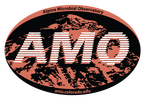|
Entrophospora spp. by Cliff Bueno de Mesquita Hello! This month’s microbe the genus Entrophospora. Entrophospora is an arbuscular mycorrhizal fungus (AMF). What does that mean? A mycorrhizal fungus is any fungus that grows on or inside of plant roots and directly interacts with the plant in some capacity, typically nutrient exchange. There are several different types of mycorrhizae such as: Ectomycorrhizae- which live on the outside of plant roots and are common associates of many tree species. Ericoid mycorrhizae- which associate with plants in the Ericaceae family such as blueberries and cranberries. Dark septate endophytes- which are described in detail in the April 2017 post below. Arbuscular mycorrhizae live on the inside of plant roots and their defining feature is the formation of treelike structures called arbuscules (Figure 1). Arbuscules are the site of active two-way transfers of nutrients between the plant host and the fungus(1). All arbuscular mycorrhizae are in the phylum Glomeromycota(2), which is a separate phylum from typical edible mushrooms you may eat (typically Ascomycota or Basidiomycota).  Figure 1. AMF structures inside a plant root. Panel A shows blue stained hyphae invading the brick-like plant root, and 2 arbuscules. Panel B is a blown-up image of an arbuscule. Panel A taken from https://mycorrhizas.info/vam.html; Panel B taken from http://www.gpnmag.com/article/mycorrhizae-description-of-types-benefits-and-uses/ . Entrophospora was the most abundant of the 28 AMF genera that we found in our 2016 Colorado root samples, based on DNA analysis. We found DNA matching Entrophospora in 27 plant samples. Entrophospora, like other AMF at our sites, is likely helping plants acquire phosphorus. Previous work in our lab showed correlations between arbuscules and plant phosphorus levels1, which supports this suggestion. Undeveloped soil, typical in high elevation sites recently exposed by receding glaciers, is often very limited in phosphorus, as it is still locked up in bedrock and has not had time to become available(3).
(1) Mullen RB & Schmidt SK. 1993. Mycorrhizal infection, phosphorus uptake, and phenology in Ranunculus adoneus: implications for the functioning of mycorrhizae in alpine systems. Oecologia 94:229-234. (2) Schüßler A, Schwarzott D, and Walker C. 2001. A new fungal phylum, the Glomeromycota: phylogeny and evolution. Mycological Research 105(12):1413-1421. (3) King AJ, Meyer AF, and Schmidt SK. 2008. High levels of microbial biomass and activity in unvegetated tropical and temperate soils. Soil Biology & Biochemistry 40:2605-2610.
0 Comments
|
AuthorVarious lab members contribute to the MoM Blog Archives
October 2023
Categories |

 RSS Feed
RSS Feed
